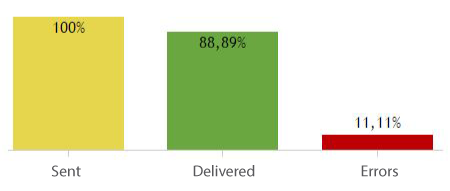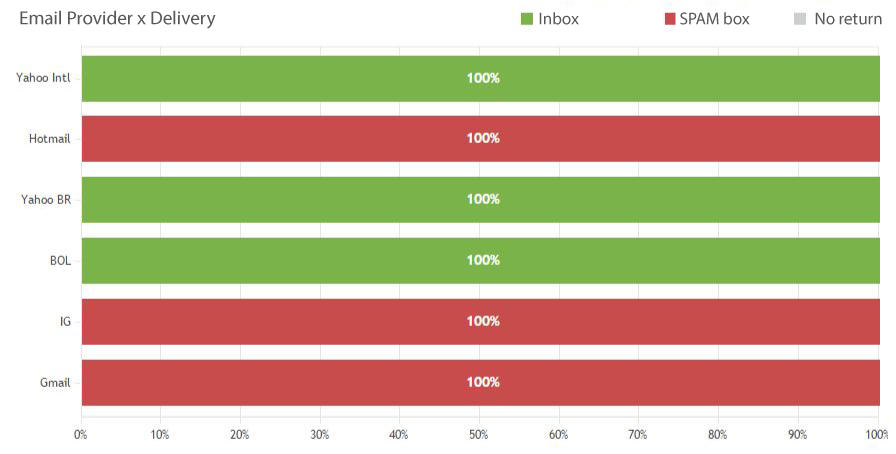What's Inbox Placement and how to increase email marketing deliverability
Published in august, 06 of 2015
Reaching the inbox is the first step in the journey of an email marketing campaign. How often did you send an email and consult soon after the delivery report to see if everything was fine? When the email reaches your contacts inbox it shows that you fulfill the most basic and obvious part of the process, which is to deliver the email, but that doesn’t mean everything is fine and there are no more worries. You should know the answer to the following question: where did my email go?
For this, there is a metric called Inbox Placement Rate (IPR), which helps to improve the placement of your emails in the inbox. And that's what we'll show in today’s article.
Inbox x Spam box
When a message arrives in the inbox, most recipients receive notifications on their smartphones or tablets. This means that the first stage of the journey was finished. However, the same doesn’t happen when the email go to the spam box. You’ll only find out if you access it directly. And this email has almost the same value of an email not delivered.
How to evaluate the Inbox Placement
The Inbox Placement Rate is gaining prominence among marketing professionals as one of the most important metrics to evaluate the email marketing campaigns delivery based on opt-in rather than the Bounce Rate, then one of the most used reports for analyzis.
But what's Inbox Placement? It's a rate based on deliverability and used to determine the percentage of the emails sent that reached the recipients' inbox. This is one of the reports available at Emailmanager. With it, you can see beyond the difference between delivered and undelivered emails. You can find out exactly what happened to your emails after they reach the target server, which went to the mailbox and which were forgotten.
When the numbers say something else
Let's try a practical example! You have a travel agency and you’re preparing an email marketing campaign with interesting content, aggressive promotions and a design that makes up well the whole message to be transmitted. But you don’t care much about your contact database, unless if they are new customers. Incidentally, you don’t even know for sure the origin of the oldest lists. These would be the numbers:

Some people would be satisfied with these numbers. However, those who have some knowledge would know that one of the items shown in the graph needs attention. After all, 11% of errors is a significant percentage. And the 88% delivered emails, is it a good number?
No! If you look at the chart below, you will see the reflection of these 11% of errors. Your emails are being delivered, however, all that were sent to the Hotmail and Gmail fell into the spam box.

If we make a quick calculation and assume that 20% of your contact database is in Hotmail or Gmail and that each email sent generated $1 of return, than 100.000 emails would be equivalent to $20.000 of return. Now you must be wondering: why my emails fell on spam?
Here we talk a lot about emails that are reported as spam. At some point, you should have heard of concepts like relevance, reputation, unknown users. These three items can be among the causes:
- Weak content or few interactions;
- Bad reputation;
- Errors generated by invalid or unknown emails.
For you, the more likely is that all items are under control, but nothing is more transparent (and often painful) that a Inbox Placement report. So if you thought everything was going well, but the numbers showed the opposite, see what the IPR says. Only in this way, you can measure the real impact of the emails sent. Incidentally, you will be able to detect problems before evaluating the percentage of deliveries, which means you'll be a step ahead to avoid an even bigger problem.
Conclusion
The Inbox Placement Rate is an ally over all the reports you have on hand when evaluating the deliverability of your email marketing campaigns. So use it as a complement and not in isolation. If there are so many options, it means that all reports carry valuable information and each one will contribute somehow.
Did you like it? Share!
Meet us at social networks and take the reading forward!
Facebook, Twitter, LinkedIn, Google+
Do you have any questions about the platform or suggestions for our blog? Send it to us through the comments!